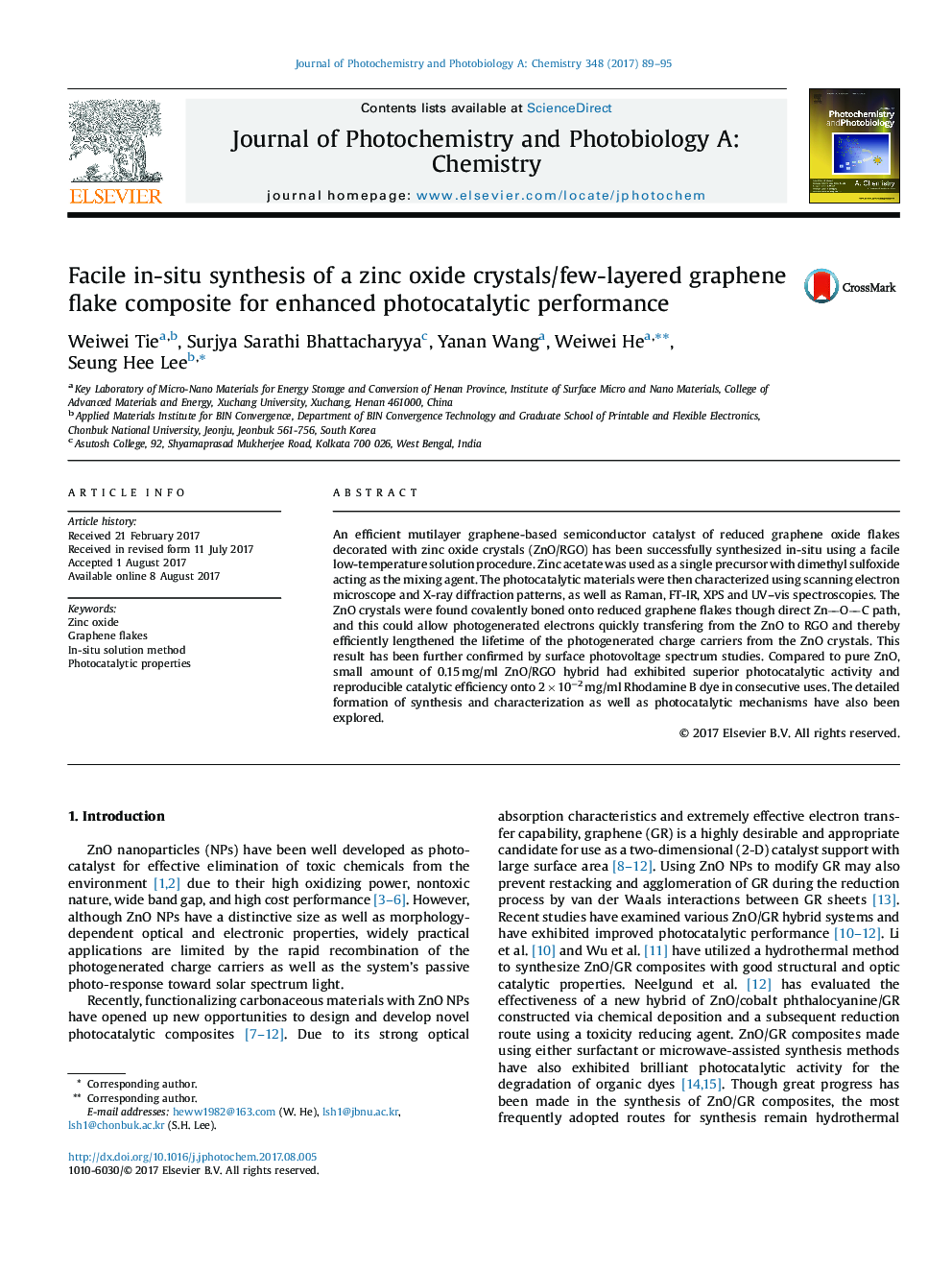| Article ID | Journal | Published Year | Pages | File Type |
|---|---|---|---|---|
| 6452358 | Journal of Photochemistry and Photobiology A: Chemistry | 2017 | 7 Pages |
â¢ZnO crystals covalently modified RGO flakes was synthesized using one-pot solution procedure.â¢The charge separation and transfer process was monitored by transient photovoltaic measurement.â¢The hybrid catalysts with 0.15 mg/ml possess complete degradation effciency of 2 Ã 10â2 mg/ml organic dye.â¢High efficiency of the hybrid catalyst based on RGO flakes was found to be reproducible.
An efficient mutilayer graphene-based semiconductor catalyst of reduced graphene oxide flakes decorated with zinc oxide crystals (ZnO/RGO) has been successfully synthesized in-situ using a facile low-temperature solution procedure. Zinc acetate was used as a single precursor with dimethyl sulfoxide acting as the mixing agent. The photocatalytic materials were then characterized using scanning electron microscope and X-ray diffraction patterns, as well as Raman, FT-IR, XPS and UV-vis spectroscopies. The ZnO crystals were found covalently boned onto reduced graphene flakes though direct ZnOC path, and this could allow photogenerated electrons quickly transfering from the ZnO to RGO and thereby efficiently lengthened the lifetime of the photogenerated charge carriers from the ZnO crystals. This result has been further confirmed by surface photovoltage spectrum studies. Compared to pure ZnO, small amount of 0.15Â mg/ml ZnO/RGO hybrid had exhibited superior photocatalytic activity and reproducible catalytic efficiency onto 2Â ÃÂ 10â2Â mg/ml Rhodamine B dye in consecutive uses. The detailed formation of synthesis and characterization as well as photocatalytic mechanisms have also been explored.
Graphical abstractGraphical illustration of the photocatalytic degradation of RhB over ZnO/RGO.Download high-res image (294KB)Download full-size image
